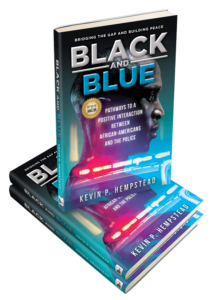Before the Tyre Nichols tragedy, many believe that only White police officers were guilty of implicit bias toward Blacks. The 5 Black police officers’ brutal beating that resulted in Nichol’s death changed that viewpoint. This tragic incident reveals that implicit bias seems to be in the system of policing, regardless of the race of the police officers involved. It’s critical that we begin to look at, evaluate, and correct as needed, the mentality of anyone that’s given the “legal” authority to decide whether someone lives or dies.
What is Implicit Bias?
Implicit bias is defined as the subconscious attitudes or stereotypes that affect how we feel about a race or ethnic group. Because these attitudes and stereotypes are subconscious, many of us are unaware of their influence on our behavior. While someone may like people of a race or ethnic group, they are usually oblivious to their own bias toward that group. Unconscious or implicit bias is not, by any means, an excuse for unfair or savage actions, akin to those that caused the death of Tyre Nichols.
Why These Officer-involved Tragedies Continue To Happen
It should be obvious to anyone paying attention, that the vast majority of police officers are caring, and even heroic individuals that take their duty to protect and serve very seriously. Unfortunately, there’s a small percentage of cops that incorporate extremely aggressive and life-threatening behavior against unarmed, non-threatening people. Often the unarmed, non-threatening people being abused are Black. Studies have shown that Blacks are more than twice as likely to die in police custody. Studies have also shown that implicit bias towards Blacks is present in many of us – including other Blacks.
While implicit bias is an important factor in these officer-involved incidences, the stress of being in law enforcement definitely plays a role. The stress of dealing with the most dangerous members of our gun-loving society cannot be overstated! Studies have shown that 7-19% of cops admit to suffering from symptoms of PTSD. Also important to recognize that cops are also dealing with personal life drama. Like us, they have mortgages, wives/husbands, ex-wives, ex-husbands, and even belligerent teenage kids! The list of stress-inducing factors contributing to bad officer behavior is long, yet still inexcusable for abuse – especially abuse resulting in deaths.
What are the Solutions?
If there was a simple solution for stopping these deadly officer-involved incidents, they would not continue to occur in practically every part of the country. Listed below are 5 guidelines for individuals to increase their chances of surviving officer-involved interactions. Also listed below are 5 guidelines for leaders and lawmakers to reduce the occurrence of these deadly encounters, hopefully before they occur.
INDIVIDUALS:
- If your vehicle is being pulled over by police, immediately and safely maneuver to the side of the road. Then keep your hands in plain sight – no reaching for your wallet, purse, registration, or anything else until instructed to do so. Never get out of your vehicle unless instructed to do so.
- Regardless of whether at home, at your job, in a restaurant, etc., follow the instructions of any police officer present. Calmly ask for clarification if you did not hear or understand the instructions.
- During all police interactions, communicate in a calm, respectful manner. You never know how much stress or pressure that armed authority figure is going through. If the officer is escalating the encounter, you must de-escalate because your life depends on it.
- Your movements should be smooth and methodical, with your hands visible – especially if inside your motor vehicle, or in a somewhat tense situation with police called to your home, in public, or place of employment. Remember, if that officer feels his/her life is in danger, your life is in danger!
- Avoid doing anything that can be interpreted as a “threatening move,” while keeping your hands in plain sight – especially if you have a weapon or your concealed-carry permit. (odds are, the cop already knows about your permit)
LEADERS:
- Provide transparency regarding officer-involved incidents by informing the public about the investigation, with accountability for any actions not within law enforcement guidelines. Releasing videos of the incident is important. (The police chief in charge of Tyre Nichol’s tragic case got it right)
- Ensure state Drivers License manuals instruct proper behavior, including “do’s and don’ts” during a traffic stop. (new drivers must be educated)
- Establish a police officer requirement to attend regularly scheduled “Shoot / Don’t Shoot” training sessions. (perhaps once or twice a year)
- Mandate all armed officers to get mental evaluations and therapy – as needed, on a regular basis. (which should include PTSD screening)
- Encourage officers’ participation in community events, within the communities they patrol. Humanizing the minority community’s citizens, as well as its cops, will help decrease the occurrences of implicit bias ending in deaths.
Accountability is important in the aftermath of these tragedies, but it’s no substitute for the life of a loved one. The above-mentioned solutions only help increase chances for peaceful interactions. With both Black and Blue lives both on the line, it’s up to us to incorporate solutions before more get hashtags attached to their names.

